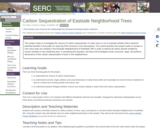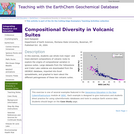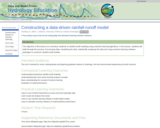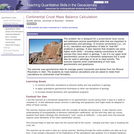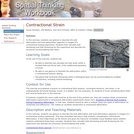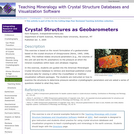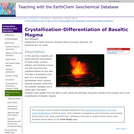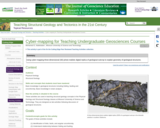Introduction:
Groundwater is key to Texas future and economy. The resource has long been a focus of legislative and economic interest. In the earliest days, the resource was viewed as 'occult and hidden.' That sense of mystery remains even as groundwater becomes more critical to the water resource picture for the state.
Since 1951, the state conducts regional water planning with the involvement of citizen stakeholders. Let's use your science-based knowledge of groundwater flow to see if you can find the right balance for both protecting and planning for groundwater use.
Our Case:
This week we will evaluate a historic court case from June 13, 1904. The case of East versus Texas Central Railroad Company is the Texas Supreme Ruling that provides the foundation for Texas groundwater law -- Rule of Capture.
In the appendix, you will find the following figures to help you determine whether or not Mr. East's well was impacted by the railroad company's pumping:
Platt map showing well locations and possible distances
Schematics of the well dimensions, along with simplified subsurface geology in the area.
In addition, you will be interested in knowing that the Geologic Atlas of Texas shows that the wells were likely completed in the Pawpaw Formation, which is a thick calcareous clay unit in the lower sections and cemented sand in the upper part. Lithologies in the area are reported to yield limited to moderate amounts of water in shallow wells. You can expect that the formation was an unconfined unit and assume that the East well is down-gradient from the Railroad well.
Assignment Part One:
1. Using the information from our last lecture, what do you think a reasonable transmissivity rate might be for the Pawpaw formation?
a. Estimate a transmissvity for a cemented sand unit.
b. Use this value as your first estimate in calculations to calculate the potential drawdown with Jacob's equation. This calculates the drawdown in an nonleaky artesian aquifer, sa, given the observed water table drawdowns.
sa = swt -- (s2st/2m)
c. Calculate swt using a correction equation.
Swt = m-(m2-2msa)1/2
Where m is the initial saturated thickness, which you may estimate at 30 ft.
2. How much water do you estimate that the railroad can extract before the well is impacted? Complete a diagram showing estimated drawdown (ft) on the y-axis and distances from the Railroad well (ft) using different transmissivity values and different distances. What do you discover about the case?
3. With your hydrogeologic analysis, do you believe that the East well was impacted by the railroad well? Can you explain how significant the impact may or may not have been?
Climate Considerations:
Is it possible that climate conditions could have impacted conditions in the well? Visit the Greenleaf website ([greenleaf.unl.edu/downloads/scPDSI.zip]) and access data for Palmer Drought Severity Indices. Looking at this data, complete the next questions.
Assignment Part 2:
4. Looking at the drought severity index maps of Texas from October 1900 to September 1902. What kind of implications might climate conditions have had on the groundwater conditions?
5. If climate conditions worsened, what do you think would happen to the wells?
Reference:
Mace, R.E., Ridgeway, C., and Sharp, J.M., 2004, Groundwater is no longer secret and occult - A historical and hydrogeologic analysis of the East case, 100 Years of Rule of Capture: From East to Groundwater Management, ed. Mullican, W.F. and Schwarz, S., Report 361, Texas Water Development Board, 63-86 pp.
Appendix -- support documents:
Figure 1 shows that Mr. East lived in Denison County, TX. The inset is a plan view map showing the potential locations of the wells in the town.
(in supporting documents)
Figure 2: Schematic of well dimensions and simplified geology.
(In supporting documents)
(Note: this resource was added to OER Commons as part of a batch upload of over 2,200 records. If you notice an issue with the quality of the metadata, please let us know by using the 'report' button and we will flag it for consideration.)

